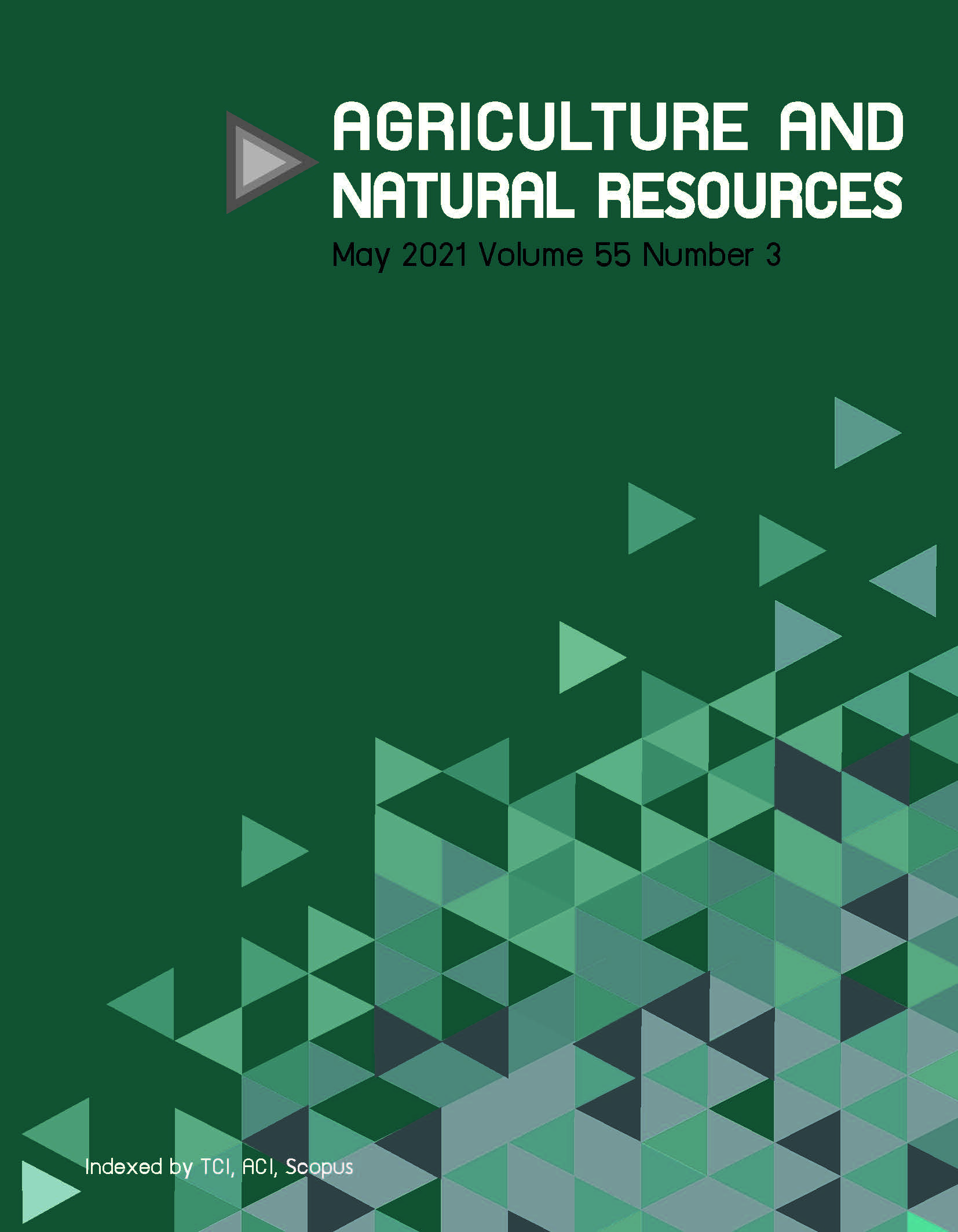Morphological and physiological responses to water deficit stress conditions of robusta coffee (Coffea canephora) genotypes in Thailand
Keywords:
Chlorophyll fluorescence, Leaf gas exchange, Robusta coffee, Water deficit stressAbstract
Drought causes crop yield losses and inhibits growth in coffee plants. The morphophysiological responses were investigated of Thai robusta coffee genotypes under water deficit. The seedlings of six robusta coffee genotypes, five local Thai genotypes (SC05, PP01, PP05, SKE06 and TPO17) and a water deficit-tolerant genotype (FRT141) were evaluated under a hydroponics system that simulated water deficit stress using polyethylene glycol (PEG). Morphophysiological parameters were collected 2 wk after stress. The water deficit significantly reduced the mean (± SD) relative water content from 95.3 ± 3.0% in the control to 67.2 ± 6.9% in the stress condition. The mean total leaf water potential was -1.4 ± 0.4 MPa and -0.2 ± 0.1 MPa for the stressed and control plants, respectively. The stressed plants showed significantly decreased stomatal conductance, along with a lower transpiration rate (70–90%) and photochemical efficiency of photosystem II (PSII; 50–80%), which directly affected the net rate of photosynthesis that was almost zero. The number of leaves, total leaf area and total biomass greatly declined after stress. There were significant differences among genotypes. FRT141 had the highest mean number of leaves (29.8 ± 9.0 leaves/plant), total leaf area (912 ± 90 cm2/plant) and total biomass (10.7 ± 2.4 g/plant) under water deficit, indicating that FRT141 was the most tolerant genotype under stress, followed by PP01 and SC05, respectively, while SKE06 and TPO17 were the most sensitive genotypes, respectively, with mean values of 1.3 ± 1.0–2.0 ± 2.0 leaves/plant, 34 ± 28–50 ± 45 cm2/plant and 4.4 ± 2.6–3.1±1.2 g/plant. Furthermore, the tolerant genotypes showed fewer physiological changes, specifically less reduction in the light-adapted quantum efficiency of PSII, electron transport rate and maximum quantum efficiency and less increase in electrolyte leakage in root and
leaf cells.
Downloads
Published
How to Cite
Issue
Section
License

This work is licensed under a Creative Commons Attribution-NonCommercial-NoDerivatives 4.0 International License.
online 2452-316X print 2468-1458/Copyright © 2022. This is an open access article under the CC BY-NC-ND license (http://creativecommons.org/licenses/by-nc-nd/4.0/),
production and hosting by Kasetsart University of Research and Development Institute on behalf of Kasetsart University.







